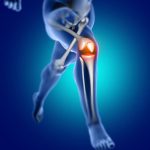Breast cancer is a disease of the breast where breast cells grow out of control. It can occur anywhere in the breast, typically starting in the inner lining of the milk ducts or in the lobules that form the milk. From there, it can spread to other parts of the body.
Initially, breast cancer spreads to the armpit glands on the same side, forming lumps called lymph nodes. If left untreated, it can spread to the bones, lungs, liver, and brain. Breast cancer is categorized into early, advanced, and metastatic stages.
Although breast cancer occurs more commonly in women, it can also affect men, albeit rarely.
Causes of breast cancer include obesity, early menarche, late menopause, first pregnancy after age 30, infertility, hormonal treatments for fertility or menopause, leukemia, prior radiation therapy, family history of breast or ovarian cancer, absence of breastfeeding, family history of genetic mutations, and exposure to BPA and other chemicals in plastics and beauty products. Genetic mutations are often associated with early-onset breast cancer, bilateral breast cancer, or a family history of male breast cancer.
Detecting breast cancer at an early stage is crucial. Common symptoms include painless lumps in the breast, bloody or clear breast discharge, scaling and itching of the nipples, or red swollen breasts with or without lumps. Regular screening, including annual mammograms starting at age forty and early screening for women with significant family histories, can significantly reduce mortality rates.
Breast cancer diagnosis involves clinical breast examination, mammography, sonography, and biopsy to determine receptor status, guiding further treatment. Metastasis is assessed through PET or CT scans.
Treatment typically involves surgery, targeted therapy, chemotherapy, and radiation therapy, with long-term hormonal therapy for many patients based on receptor status.
Preventive measures include lifestyle changes to address hormonal imbalances, such as avoiding late marriage and childbirth, choosing breastfeeding, and avoiding hormone replacement therapy, obesity, excessive consumption of sweets, junk food, alcohol, and smoking.
Key points to remember:
- Breast cancer affects both men and women.
- Early detection significantly improves survival rates.
- Breast-conserving surgery is possible in early-stage cases, and not all patients require mastectomy.
- Breast reconstruction using the patient’s tissue is feasible after mastectomy.
- Comprehensive treatment combining surgery, chemotherapy, and radiation therapy is necessary for optimal outcomes.





















